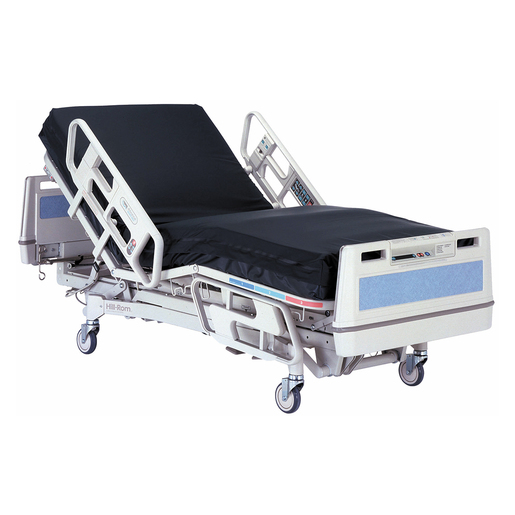


Date: 07 Nov 2025
Choosing the right hospital-style bed for home care is a key decision for those managing long-term recovery, mobility limitations or chronic conditions. Whether you are a caregiver, family member or patient you’ll want a bed that supports comfort, safety, hygiene and cost-effectiveness.
This article explains what you need to know in a clear, professional yet accessible way, with practical advice and product examples you can order online.
Home hospital beds bring several major benefits. First, they allow you to replicate a more clinical, adjustable setup in the home environment — meaning better positioning, easier care tasks and often improved patient comfort.
Second, they can reduce strain on caregivers by offering features like height adjustment, side rails and mobility options. Third, for people with reduced mobility, they support safer transfers, reduce fall risk and promote better posture — which can help prevent pressure ulcers and other complications.
Using a hospital-type bed at home also means you can adapt the setup to changing care needs over time, rather than sticking with a standard fixed bed that may become unsuitable.

Selecting the correct type is pivotal. Understanding how each kind functions helps you align the bed’s capabilities with the patient’s needs, mobility level and care environment.
Manual beds are operated by hand-crank(s), typically adjusting the head, leg or height sections. They are more affordable and simpler to maintain, making them a practical choice if the user is semi-mobile or if electrical power is unreliable.
While manual models lack motorised convenience, they still deliver core functions like raising the backrest or leg-rest and are a viable option when budget or simplicity are important.
Electric beds offer motorised adjustment of multiple sections (head, leg, height) often via remote control. They reduce caregiver effort and enable more frequent repositioning — a major benefit for patients with limited mobility or who require frequent repositioning for comfort or medical reasons.
Kenyan suppliers list a “5 Function Electric Hospital Bed” including backrest, height and Trendelenburg positioning and which further tend to cost more and may require maintenance, and need reliable power — so check local support, wiring and service before purchase.
For intensive care, highly dependent patients or those requiring advanced care at home (for example ventilator support, frequent repositioning, or complex monitoring) an ICU-grade bed may be appropriate. These beds often include built-in features like full Trendelenburg tilt, multiple articulations, integrated scales, advanced side rails and are designed for hospital wards.
If you anticipate escalation of care needs or frequent nurse/caregiver involvement, selecting a bed with ICU-level features may reduce future cost/upgrade burden.
In Kenya settings you’ll want to ensure after-sales service, spare parts and technical support are available locally.

When comparing beds, looking beyond “manual vs electric” to specific features ensures you get the best fit for comfort, hygiene and safety.
Side rails are critical for preventing falls and supporting repositioning. Good beds will offer collapsible or removable rails with secure locking mechanisms to prevent accidental lowering. The double crank hospital bed listing mentions aluminium alloy four-section side rails with locking mechanisms.
Also check that rails are at a height compatible with mattress thickness so a user cannot roll over them accidentally, and ensure there is safe clearance for transferring to a wheelchair or chair.
The mattress you choose impacts comfort, pressure ulcer risk, hygiene and compatibility with the bed frame. Common options include foam, alternating-air, gel-overlay and hybrid mattresses.
When buying a home hospital bed, ensure the mattress is recommended by the manufacturer, fits the frame properly and is compatible with rail height and articulation. Ask about waterproof or zip-removable covers, whether the mattress is fire-retardant, and whether replacement covers are available locally.
In the home care setting, cleaning and hygiene are essential — especially if the patient is incontinent, has mobility limitations or is prone to infections. Choose a bed with wipeable surfaces, minimal crevices, removable rails/headboards, smooth finish powder-coated or medical-grade plastic panels.
The locally-made hospital beds in Kenya emphasise powder-coated steel frames and removable components for easy repair and cleaning.
Also check mattress covers, whether the bed allows access underneath for cleaning and whether castors lock securely to avoid unintended movement during cleaning or repositioning.

Another key decision: should you rent or buy the home hospital bed? And is online purchasing via platforms (e.g., Pharmily) appropriate?
Buying makes sense when: you anticipate long-term use; you want full customisation and ownership; and you are okay with upfront cost. Ownership gives flexibility in modifying bed settings, choosing mattress upgrades and avoiding recurring rental fees.
For example, pharmacies/online portals like Pharmily serve Kenya and deliver medical devices country-wide.
When buying online, ensure you verify delivery, assembly support, after-sales service, warranty and your delivery address is accessible.
Renting may be suitable when: the need is short-term (e.g., post-surgery rehab), you want lower upfront cost, or your care needs might change. Rental agreements often include maintenance, mattress replacement and setup.
However, in Kenya the rental market for hospital-grade home beds is less standardized than buying, so carefully check contract terms, what happens if the user’s needs change, and removal/logistics costs.
Buying online offers convenience, wider choice and sometimes better pricing. But for hospital beds you may benefit from seeing the bed in person (check rail height, articulation feel, mattress comfort) and verifying the delivery and setup process.
If using an online pharmacy like Pharmily which primarily focuses on medicines and supplies, ensure the bed is shipped, installed and supported—especially for heavy, adjustable frames. Consider using a local medical-equipment supplier for onsite demonstration or pickup if needed.
Here are two real products available in Kenya to illustrate what to look for:
This model suits a home care setting with caregiver / nurse support and where a higher investment makes sense, especially if mobility is very limited.
Choosing the right hospital bed for home care requires thoughtful consideration of type (manual vs electric vs ICU-grade), features (safety rails, mattress, cleaning), and whether buying or renting makes more sense for your situation. By preparing your room, understanding local suppliers and ensuring after-sales support you’ll set up a safe and comfortable home-care environment.
If you like, I can check up-to-date product listings in Kenya specifically via Pharmily or other local suppliers with live pricing, and provide a comparison table. Would you like me to do that?
Q1. How long can a home hospital bed be used?
A home hospital bed can be used for as long as needed, but you should monitor it for wear (e.g., mattress sagging, rail looseness) and reassess if the patient’s care needs change (for example if they need ICU-grade features).
Q2. Are all hospital beds safe for home use?
Not necessarily. “Hospital bed” is a general term — you must ensure it has the right certifications, safety rails, proper mattress compatibility and suitable for the user’s weight/mobility. Local suppliers often design beds for clinics; you’ll need appropriate home-care versions. For example, locally-made Kenyan beds emphasise powder-coated mild steel frames and are suitable for home-based care.
Q3. What size mattress do I need?
The mattress size must match the bed frame platform. Key dimensions include length, width and thickness (which affects rail height). Confirm the supplier’s recommendation and how mattress height changes guard rail safety.
Q4. Can I buy from an online pharmacy like Pharmily?
Yes, you can purchase medical-equipment and devices from online pharmacies such as Pharmily in Kenya. However, for heavy equipment like hospital beds you’ll need to confirm delivery, assembly, warranty and service support. Sometimes local showroom inspection or local supplier support is advisable.